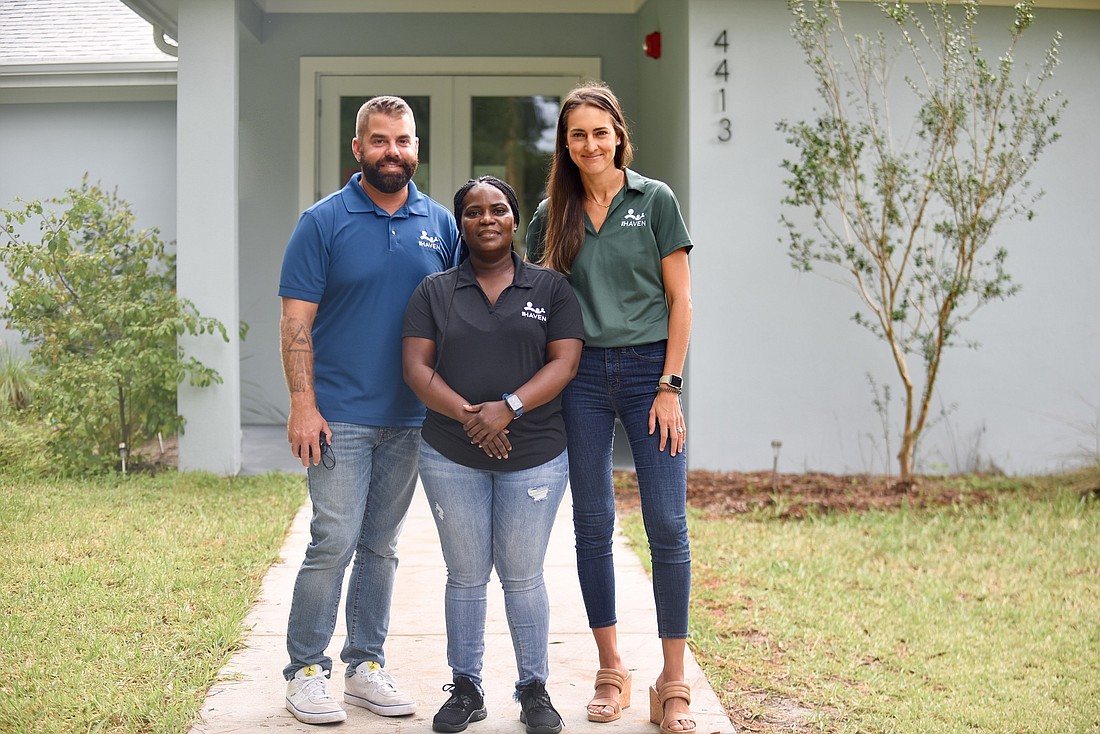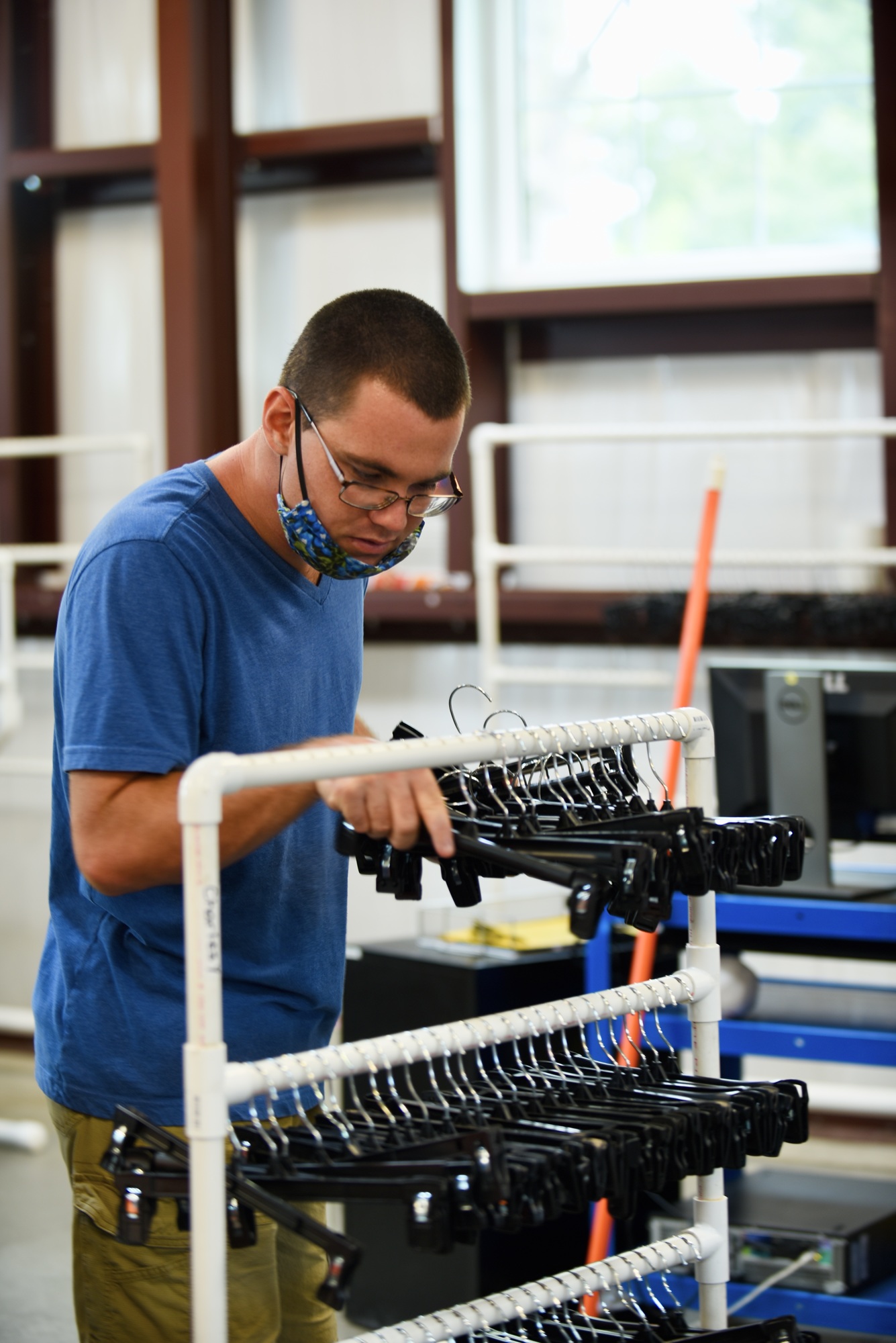- April 30, 2025
-
-
Loading

Loading

Elizabeth, a vivacious woman with an intellectual disability, has lived at The Haven for 54 of her 64 years. She’s fortunate, to put it mildly.
The facility, nestled on 32 bucolic acres a mile west of University Town Center, has provided a wide range of programs for people with disabilities since it opened as a school for developmentally disabled children in 1954. Elizabeth attended The Haven’s preschool, which was located in a building at Sarasota-Bradenton International Airport. She then became part of the first group of residents at the Children’s Haven, living in a dormitory-style environment. There, she received attention, full-time care and love, as well as the opportunity to interact with her peers and the outside world.
It could have been far different. Most developmentally disabled kids of Elizabeth’s generation were either shamefully hidden away in parents’ homes or, worse, warehoused in institutions amid often squalid conditions with indifferent or outright cruel staff members. Instead, Elizabeth lives with seven others — she has her own room — in Harmony House, one of six group homes on The Haven’s campus. The first was built in 1984, and two more are coming in the next year or so.

The homes are staffed around the clock by professionals, but residents live together as a quasi-family — cooking, cleaning, organizing, socializing, having fun, having (and solving) disputes. They also have jobs, be it out in the community or in one of the micro-businesses run on campus. The 49 current Haven residents range in age from 21 to 72. They have physical and intellectual disabilities that include Down syndrome, autism spectrum disorder, spina bifida and cerebral palsy — many with multiple conditions. Some get around in wheelchairs.
Elizabeth, she’s thriving. “She certainly blossomed by living here,” says Brad Jones, The Haven’s president and CEO. “She works in our kitchen, is part of our janitorial crew and takes part in the Special Olympics. She gets out and about — one of our residents who’s a kind of celebrity in the community.”
The Haven is set to break ground on two new homes late this year, each of them 5,800 square feet at a cost of $1.1 million. (Four donors got together and covered the entire amount.) Construction should be completed in about nine months, Jones says, making room for 16 more full-time residents. The waitlist, as of mid-September, was 155.
One of the new buildings will be called Brad’s Place, named after Jones, who has run The Haven for 11 years. The home will be specially designed and earmarked for senior residents. Over the years, Jones has stood by as older residents had to move into nursing homes because The Haven could no longer provide the necessary care. The devastation it causes among the residents and their families, “saddens me and sort of pisses me off,” he says. “One of the new houses will be licensed for a specialized program that provides a high level of care — say, for someone who has advanced dementia — that allows our residents to age in place. Brad’s Place will be the last stop.”
A residence like Brad’s Place is all the more necessary because people with severe disabilities are simply living longer, in part because they are no longer being shunned or locked away. Jones and staffers have taken large groups of residents on trips to San Antonio and the mountains of Tennessee.
Living cooperatively in a group setting contributes significantly to a developmentally disabled person’s quality of life. One of the homes at The Haven includes only men, another only women, and four are mixed-gender. Both of the new homes will include men and women. “We’ve found over time that the coed model works better,” Jones says.
Why? “There’s less drama,” he says. “When they interact with the opposite sex, they tend to manage disagreements or issues better.”
It’s not uncommon for romantic relationships to bloom among The Haven’s adult live-ins. “The women will meet with the nurse, the guys will meet with me, and we talk about the situation, safety and other issues,” Jones explains. “Most of the time, it’s not too intimate, more holding hands and hugging. It’s a big deal for them. Quite a few of them have had the same boyfriend or girlfriend for 10 years or more. They’re like sweet friendships.”
Many of the relationships end, of course, and that has found Jones consoling men with broken hearts. “Usually, after a day, they’re over it,” he says. “They have an ice cream and start talking about this other girl they like. It’s onto the next.”
Residents at The Haven enjoy a quality of life that’s superior to most other residential environments for the severely disabled, and staff members find that working there has benefits that go beyond a career or a paycheck.
“The people in our care are happy,” says Alison Thomas, The Haven’s chief operating officer. “They have this hope and optimism. You can be having the worst day in the world, and when you show up here, it all tends to go away. These guys are just happy, even though they’ve been dealt a pretty crappy hand. It rubs off on you.”